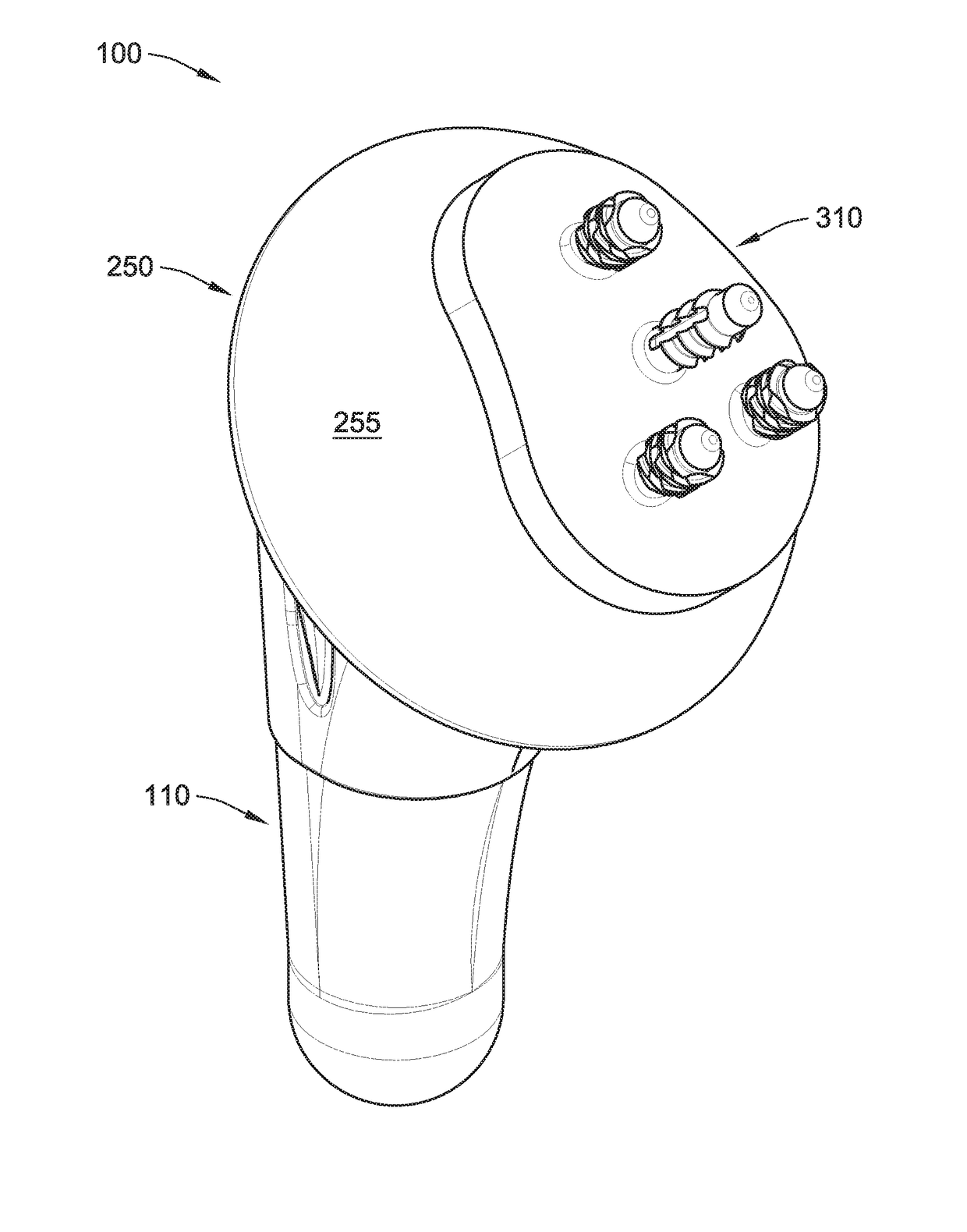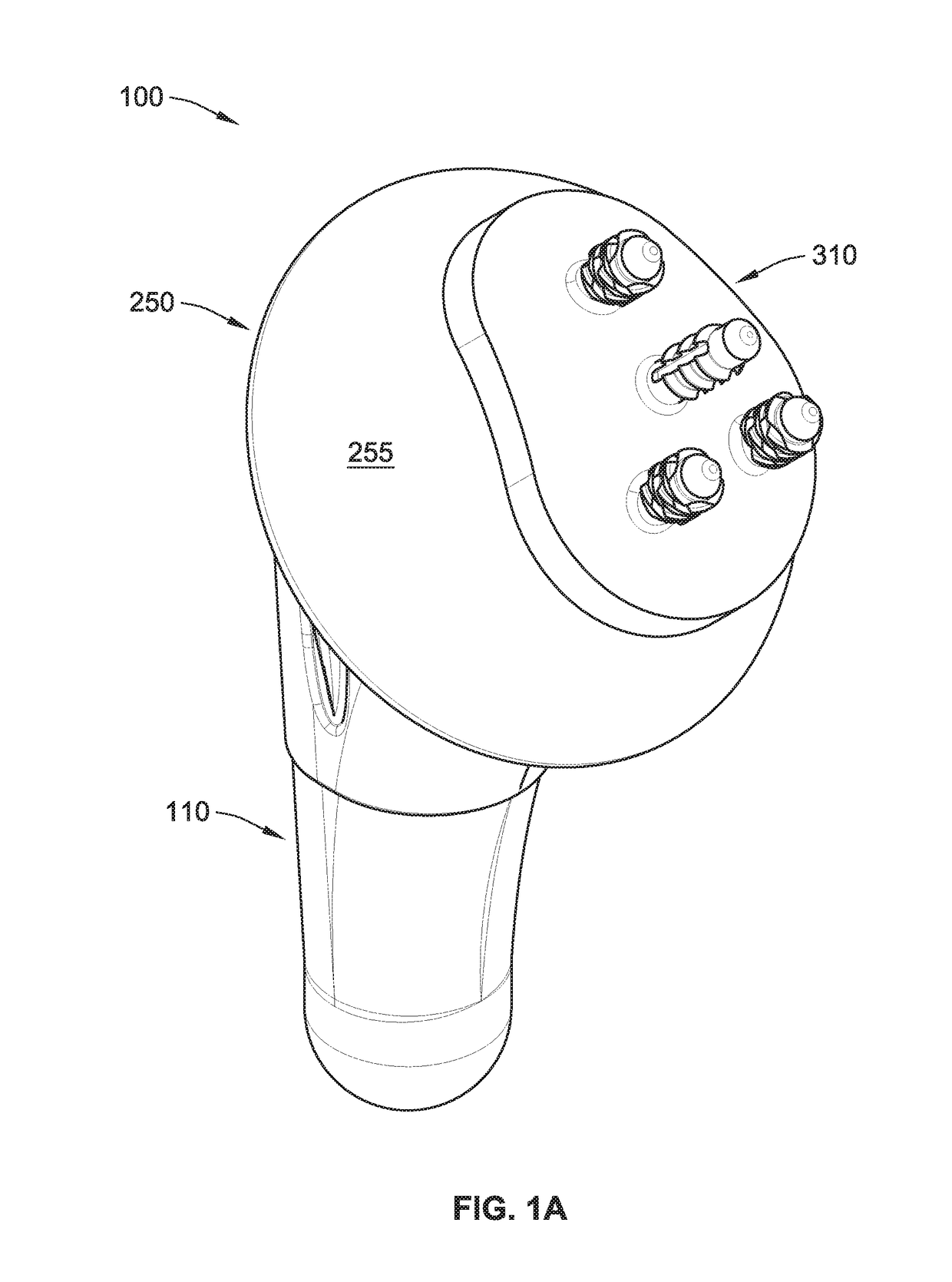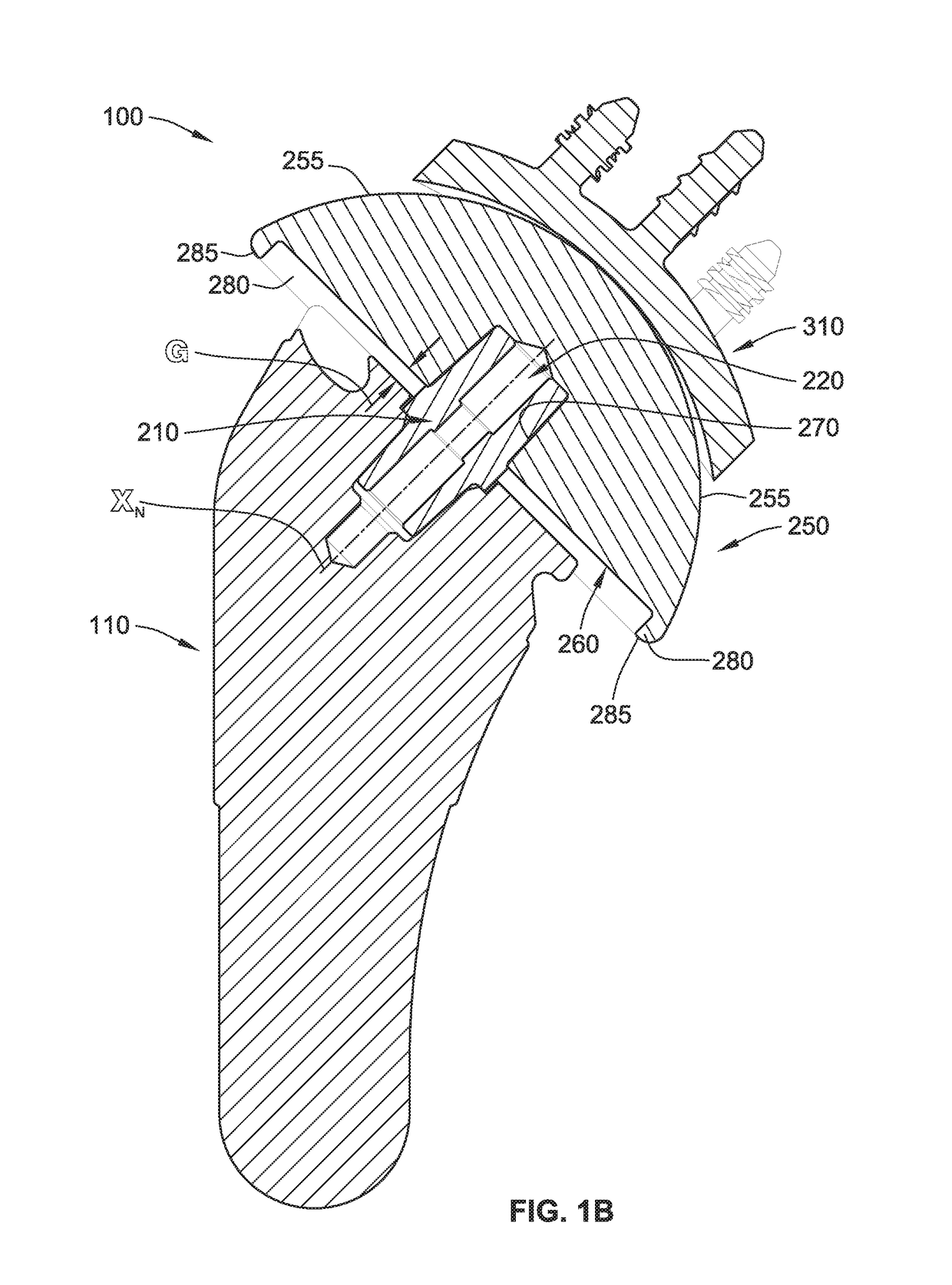Shoulder Implant Components
a technology of shoulder implants and components, applied in shoulder joints, medical science, prosthesis, etc., to achieve the effect of providing rotational stability and rotational stability
- Summary
- Abstract
- Description
- Claims
- Application Information
AI Technical Summary
Benefits of technology
Problems solved by technology
Method used
Image
Examples
Embodiment Construction
[0054]While this disclosure is susceptible to embodiment in many different forms, there is shown in the drawings and will herein be described in detail preferred implementations of the disclosure with the understanding that the present disclosure is to be considered as an exemplification of the principles of the disclosure and is not intended to limit the broad aspect of the disclosure to the implementations illustrated.
[0055]Referring generally to FIGS. 1A-2B, a shoulder implant system 100 includes a humeral stem implant 110, a humeral neck implant component 210, a humeral head implant component 250, and a glenoid implant 310. Generally, the humeral stem implant 110 is installed / implanted in a prepared humerus bone of a patient such that a portion (e.g., a tapered face 132 shown in FIG. 7A) of the humeral stem implant 110 remains exposed to be coupled with a first end portion 212a (FIGS. 2A and 2B) of the humeral neck implant component 210. As such, a second opposing end portion 21...
PUM
 Login to View More
Login to View More Abstract
Description
Claims
Application Information
 Login to View More
Login to View More - R&D Engineer
- R&D Manager
- IP Professional
- Industry Leading Data Capabilities
- Powerful AI technology
- Patent DNA Extraction
Browse by: Latest US Patents, China's latest patents, Technical Efficacy Thesaurus, Application Domain, Technology Topic, Popular Technical Reports.
© 2024 PatSnap. All rights reserved.Legal|Privacy policy|Modern Slavery Act Transparency Statement|Sitemap|About US| Contact US: help@patsnap.com










